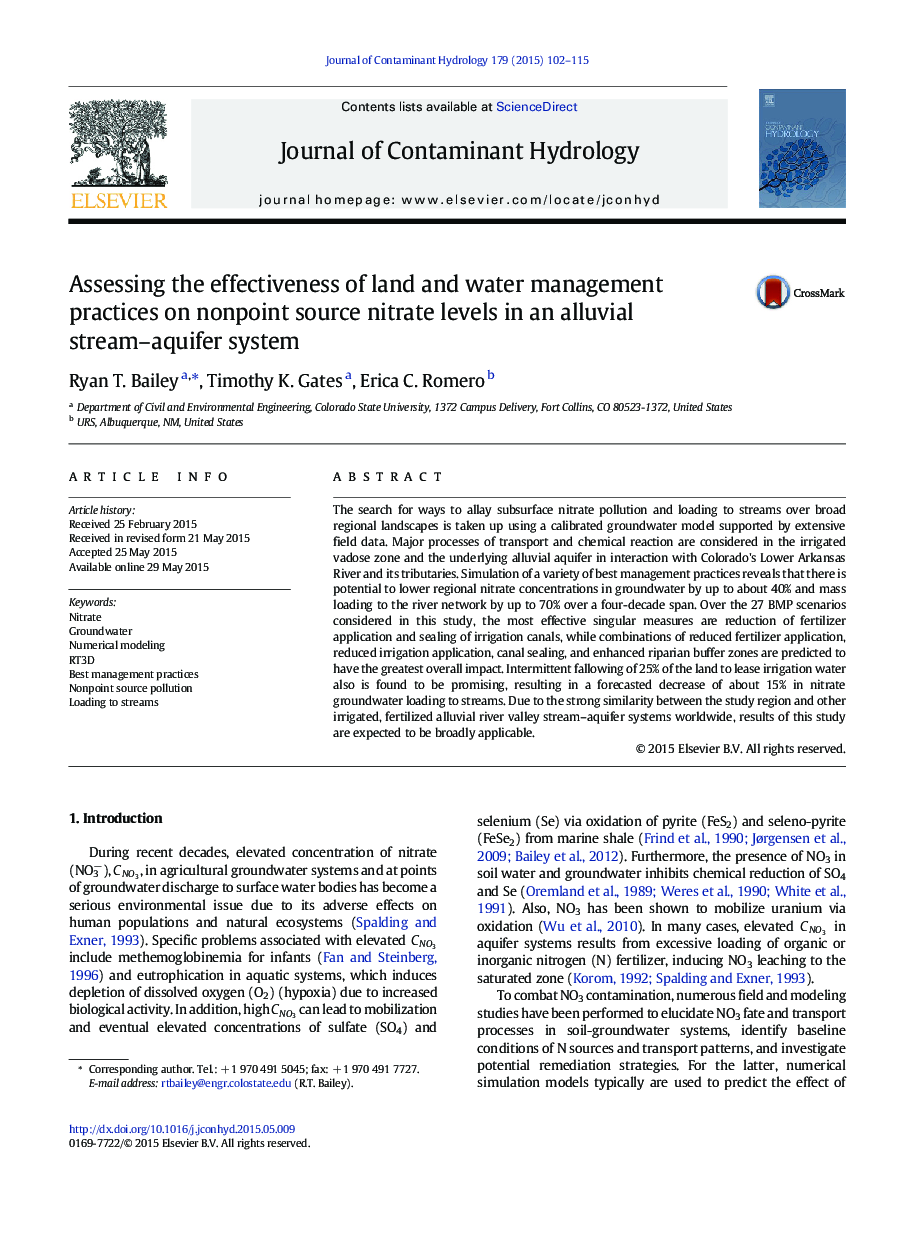| Article ID | Journal | Published Year | Pages | File Type |
|---|---|---|---|---|
| 6386458 | Journal of Contaminant Hydrology | 2015 | 14 Pages |
â¢Nitrogen cycling and transport model used to assess best-management practices.â¢Water management scenarios include reduced irrigation, land fallowing, canal sealing.â¢Land management scenarios include reduced fertilizer and riparian buffer areas.â¢Results show significant reductions in N loading to the Arkansas River.
The search for ways to allay subsurface nitrate pollution and loading to streams over broad regional landscapes is taken up using a calibrated groundwater model supported by extensive field data. Major processes of transport and chemical reaction are considered in the irrigated vadose zone and the underlying alluvial aquifer in interaction with Colorado's Lower Arkansas River and its tributaries. Simulation of a variety of best management practices reveals that there is potential to lower regional nitrate concentrations in groundwater by up to about 40% and mass loading to the river network by up to 70% over a four-decade span. Over the 27Â BMP scenarios considered in this study, the most effective singular measures are reduction of fertilizer application and sealing of irrigation canals, while combinations of reduced fertilizer application, reduced irrigation application, canal sealing, and enhanced riparian buffer zones are predicted to have the greatest overall impact. Intermittent fallowing of 25% of the land to lease irrigation water also is found to be promising, resulting in a forecasted decrease of about 15% in nitrate groundwater loading to streams. Due to the strong similarity between the study region and other irrigated, fertilized alluvial river valley stream-aquifer systems worldwide, results of this study are expected to be broadly applicable.
